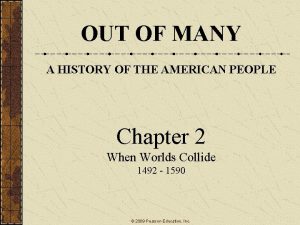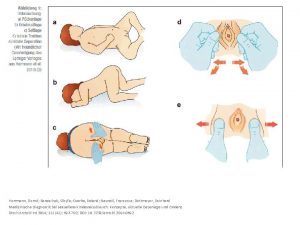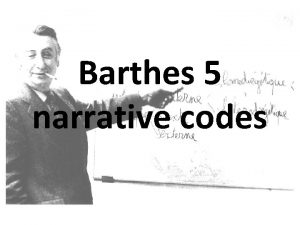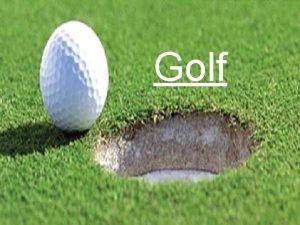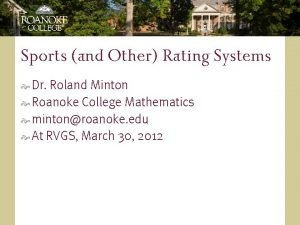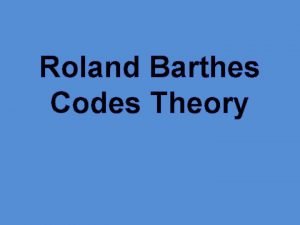Golf Modeling Dr Roland Minton Roanoke College Modeling





































- Slides: 37

Golf Modeling Dr. Roland Minton Roanoke College

Modeling does NOT mean

Modeling does mean : The translation back and forth between elements of a real world situation and mathematical abstractions of those elements and their interactions.

Situation: what happens when the ball goes in the hole?

Situation: what happens when the ball goes in the hole?

Situation: what happens when the ball goes in the hole? This is a good mathematical physics problem. Identify the variables and forces, write out the equations and solve them! Modeling issue: what is the best way to describe the position of the ball?

Cylindrical coordinates! Solution: the angle is periodic and z

Solution: the angle is periodic and z

Solution: the angle is periodic and z is also periodic!

Greg Kennedy: Juggling in a Cone

Situation: what happens as the ball is rolling toward the hole? From 12 feet, the pros make 32. 1%. They miss more than 2 out of 3! Dave Pelz’s True Roller from 12 feet: 100% on pool table. 73% at Westchester before round. 30% at Westchester after round! round

Why are the Percentages So Low? Two reasonable models: 1. Constant deflections – Brownian motion 2. Discrete deflections – Modified Poisson One criterion: Werner and Greig experiments show that lateral deflection has standard deviation of 2% of distance.

For a 12 -foot putt,

Two Models Tested 1. Constant deflections Problem: the standard deviation is wrong !

Two Models Tested 2. “Footprint” deflections This fits the data IF the deflections are more likely close to the hole.

What would this look like?

A macro model: who would win a match between an erratic and a consistent golfer? December 1945 Mathematical Gazette “A Mathematical Theorem about Golf” By G. H. Hardy

G. H. Hardy "The patterns, “I ammathematician's interested in mathematics like the poet's, onlythe as apainter's creativeor art. ” must benever beautiful ; the ideas, like “I have done anything the colours or the words, must useful. No discovery of mine hasfit together in aleast harmonious way. made … the difference to the Beauty test: there is no amenityisofthe thefirst world. ” permanent place in the world for ugly mathematics. "

The Model: Each hole is a par 4. Each stroke is one of three types: Excellent with probability p Bad with probability p Average with probability 1 -2 p. Excellent shots “subtract” a stroke. Bad shots “add” a stroke.

Examples: Par 4: Birdie 3: Bogey 5: Birdie 3: AAAA or E B A A AEA ABAAA AEE

Problem: in a match between Mr. Consistent (p=0. 1) versus Mr. Ratic (p=0. 2), who wins? First, what are the average scores for C and R? Aren’t they both 4?

Not all E’s and B’s cancel, because some E’s are “wasted. ” Examples: AEE = AEA, AAAE = AAAA and so on. How to compute the average?

How to compute the average? 1. Basic formula: 2 x Prob(2) + 3 x Prob(3) + 4 x Prob(4) + 5 x Prob(5) + ….

How to compute the average? 2. Logical shortcut: 4+wp w is the probability of having a chance to waste an E. AE, EA, AAA, EBA, EAB, …

How to compute the average? 2. Group by score on hole. Calculus to the rescue! Result: higher p, higher score. C has the better average score!

How to compute the average? 3. Group by number of B’s. Can compute variance!

A Different Question: Who is the best putter in golf?

Who is the best putter in golf? Length (ft) Percent Made 0 -3 99. 2 3 -4 91. 4 4 -5 80. 9 5 -6 70. 3 6 -7 60. 9 7 -8 53. 1 8 -9 46. 9 How good is it to make a 4 -foot putt? 8. 6% above average?

Who is the best putter in golf? Length (ft) Average # putts 0 -3 1. 013 3 -4 1. 101 4 -5 1. 215 5 -6 1. 318 6 -7 1. 417 7 -8 1. 493 8 -9 1. 558 How good is it to make a 4 -foot putt? . 101 strokes better than average

Who is the best putter in golf? Example: On hole 1, 2 putts from 8 feet. On hole 2, 1 putt from 15 feet. On hole 3, 3 putts from 60 feet. etc. Distance Tour Avg Putts 8 1. 49 2 15 1. 77 1 60 2. 25 3 Difference -0. 51 +0. 77 -0. 75

Who is the best putter in golf? What is the criterion? 1. Putts per round? 2. Putting average? 3. Putts better/worse than average?

Corey Pavin averaged 1 putt less per round than an average putter would have from the same distances.

To rate putters, use the average number of putts from each distance.

To rate other shots, use the average number of strokes from that position.

Overall Ratings 11(p 4) + 4(p 3) + 3(p 5) + putt + sand + 10(LF) + 4(LR) + 3(SF) + 3(SR) + 2(LLF)

Before you leave … I would like to answer a couple of questions. Thank You !

 Tecnica twister
Tecnica twister Relational modeling vs dimensional modeling
Relational modeling vs dimensional modeling Modeling role modeling theory
Modeling role modeling theory Why did roanoke fail and jamestown succeed
Why did roanoke fail and jamestown succeed Jamestown and plymouth venn diagram
Jamestown and plymouth venn diagram Direct primary care roanoke va
Direct primary care roanoke va Map of the lost colony of roanoke
Map of the lost colony of roanoke Lesson 1 roanoke and jamestown
Lesson 1 roanoke and jamestown Kiwanis club of roanoke
Kiwanis club of roanoke Lesson 1 roanoke and jamestown answer key
Lesson 1 roanoke and jamestown answer key Ace portal
Ace portal The lost colony of roanoke
The lost colony of roanoke Roanoke
Roanoke Brainpop 13 colonies
Brainpop 13 colonies Henry hudson motives for exploration
Henry hudson motives for exploration Roanoke island 1585
Roanoke island 1585 Roanoke colony
Roanoke colony Francis drake roanoke
Francis drake roanoke Kf bank
Kf bank Roland stettler
Roland stettler Roland halil
Roland halil Roland guijt
Roland guijt Childe roland summary
Childe roland summary Roland stettler
Roland stettler Roland halil
Roland halil Roland kistler
Roland kistler Roland stull ubc
Roland stull ubc Roland van de sande
Roland van de sande Roland barthes significado y significante
Roland barthes significado y significante Dr. roland csorba
Dr. roland csorba Roland barthes s/z
Roland barthes s/z Rolands and associates
Rolands and associates Proairetic code meaning
Proairetic code meaning Mitologi roland barthes
Mitologi roland barthes Roland barthes cultural studies
Roland barthes cultural studies Rolands and associates
Rolands and associates Roland barthes death of the author
Roland barthes death of the author Roland ledinger burgenland
Roland ledinger burgenland
















